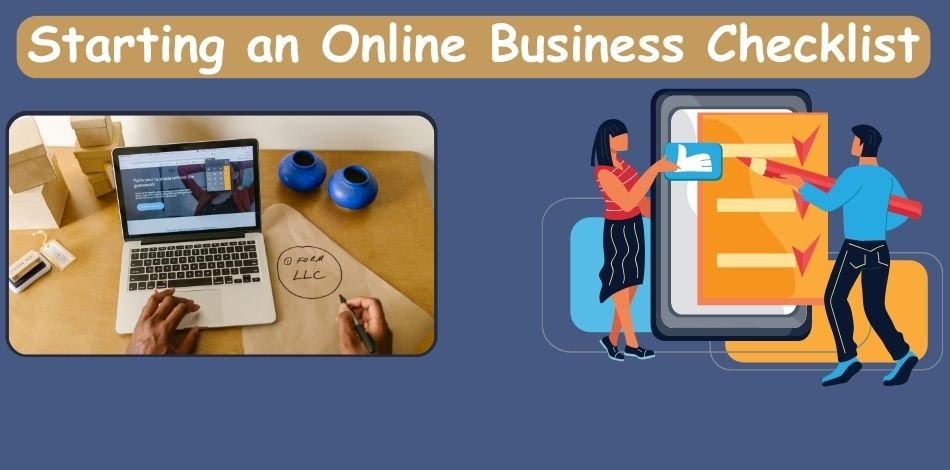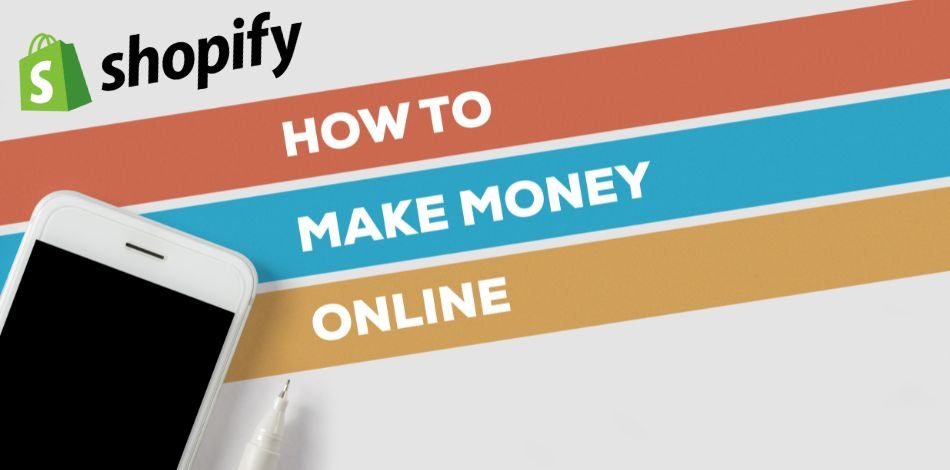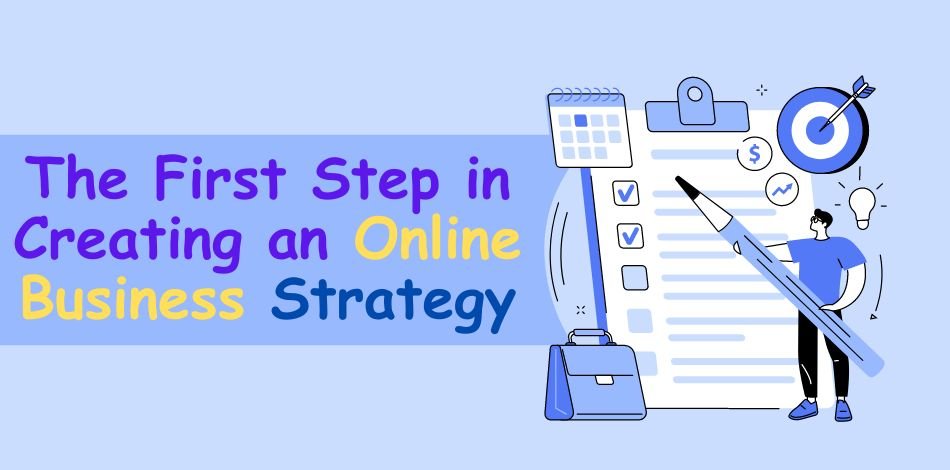Last Updated on October 30, 2025
In today’s digital world, starting a business has never been easier or more affordable. Gone are the days when you needed a physical storefront, expensive inventory, or large startup capital to get started. The internet has democratized entrepreneurship, allowing anyone with a laptop and a strong work ethic to start a profitable business from virtually anywhere in the world.
Whether you’re looking for a side hustle, a full-time career shift, or a passive income stream, there are many low-cost online business ideas with high profit potential. From freelancing to e-commerce, the opportunities are as diverse as they are rewarding.
In this comprehensive guide, we’ll break down ten powerful business models that are not only budget-friendly but also have the potential to deliver high returns. Let’s begin with one of the most popular choices for new entrepreneurs: Dropshipping.
1. Dropshipping
Dropshipping is one of the most accessible and low-risk online business models available today. It allows entrepreneurs to run a retail business without holding any inventory. Instead, the seller partners with a third-party supplier who stores and ships products directly to the customer.
✅ Pros of Dropshipping:
Low Startup Costs: Since you don’t have to buy products in bulk or manage a warehouse, your initial investment remains minimal. You only pay for the product once you’ve made a sale.
Minimal Financial Risk: Without inventory to worry about, you’re protected from the risk of unsold stock or overstocking.
Flexible Work Location: All you need is a reliable internet connection. You can run your business from home, a coffee shop, or while traveling the world.
Wide Product Selection: You can easily test and sell a wide range of products without having to store them physically, making it ideal for trend testing and niche experimentation.
Scalable Business Model: You can expand your store, add more products, and increase marketing efforts without worrying about fulfillment bottlenecks.
Focus on Core Strengths: With shipping and product management outsourced, you can focus more on marketing, branding, customer service, and growing your brand.
No Warehousing Hassles: You save time, space, and costs by avoiding storage fees and managing physical stock.
Beginner-Friendly: Getting started with platforms like Shopify, WooCommerce, and dropshipping tools like Oberlo or Spocket is relatively simple.
Faster Launch Time: You can build and launch a dropshipping store in days, not months.
Global Reach: You’re not restricted by geography; you can sell products worldwide with the right logistics partner.
❌ Cons of Dropshipping:
Lower Profit Margins: Because you’re buying products individually from a supplier, the cost per unit is higher than bulk wholesale prices, limiting your margin.
Limited Control: Since third-party suppliers handle inventory and shipping, you have little control over the product quality, shipping times, or packaging.
Customer Service Challenges: If something goes wrong, customers expect you to fix it—even when the issue originates with your supplier.
Shipping Complications: If you’re working with multiple suppliers, one customer order may come in multiple shipments, leading to confusion and added costs.
High Competition: The low barrier to entry means many others are likely selling the same or similar products. This often leads to price wars and the need for creative marketing.
Long Shipping Times: Many suppliers are located overseas, especially in China, which can lead to longer shipping durations and frustrated customers.
Supplier Mistakes: Errors in shipping, damaged goods, or incorrect orders reflect poorly on your business, even though you don’t handle fulfillment.
Branding Limitations: Building a unique brand is harder when you don’t have control over product design, packaging, or customer experience.
Platform Restrictions: Some eCommerce platforms and marketplaces (like Amazon and eBay) have strict policies regarding dropshipping that may limit your growth.
Hidden Fees: Some suppliers charge extra handling or dropshipping fees, which can reduce your profit unexpectedly.
Inventory Syncing Risks: Without real-time updates from your suppliers, you could sell products that are out of stock, leading to refunds and poor customer experience.
2. Blogging – Turn Passion into Profit
Blogging continues to be one of the most popular and rewarding low-cost online business ideas with high profit potential. It’s a platform where you can share your knowledge, creativity, and expertise while building a loyal audience—and monetizing it in several ways.
Starting a blog costs very little. A domain name and hosting can be acquired for under $100/year, and many platforms like WordPress or Blogger make setup simple. With the right niche and commitment, a blog can become a significant source of passive income.
✅ Pros of Blogging:
Self-Expression & Creativity: Blogging lets you share your unique voice, tell stories, or discuss passions—whether it’s travel, tech, personal finance, parenting, or fashion.
Knowledge Sharing: You can educate readers, solve problems, and provide valuable insights—building trust and authority.
Improved Writing & Research Skills: Blogging helps you grow as a communicator and deepens your understanding of the topics you cover.
Networking Opportunities: A blog opens doors to connect with like-minded individuals, influencers, brands, and media outlets.
Professional Visibility: Many bloggers land book deals, speaking gigs, consulting contracts, and job offers by showcasing their expertise.
Multiple Monetization Options:
Affiliate Marketing: Promote products or services and earn commissions.
Display Ads: Use networks like Google AdSense or Ezoic for ad revenue.
Sponsored Content: Collaborate with brands that pay you to feature them.
Sell Digital Products: eBooks, courses, and templates work well for niche blogs.
Services: Offer writing, coaching, or design services based on your blog’s niche.
SEO Advantages: Blog content can rank in search engines, bringing free, organic traffic over time.
Passive Income: Evergreen blog posts can generate income for months or years without needing to be updated constantly.
Portfolio Builder: Ideal for writers, designers, and digital marketers looking to showcase their work.
❌ Cons of Blogging:
Despite its potential, blogging comes with its share of challenges:
Time-Consuming: Creating high-quality content, doing keyword research, optimizing for SEO, and promoting posts takes significant time and consistency.
Delayed Results: Blogging is not a get-rich-quick path. It may take 6–12 months before you see steady traffic or income.
Saturated Niches: Most profitable blog niches like “make money online,” “fitness,” or “personal finance” are already very competitive, requiring effort to stand out.
Inconsistent Income: Revenue from affiliate links or ad impressions can fluctuate based on traffic, algorithm changes, or seasonality.
Technical Maintenance: You’ll need to manage plugins, backups, page speed, and mobile responsiveness, or hire someone to do it for you.
3. Online Tutoring – Teach What You Know
Do you have a knack for explaining complex concepts? Are you passionate about a particular subject? Then online tutoring might be the perfect fit for you. As one of the most flexible and scalable low-cost online business ideas with high profit potential, tutoring allows you to turn your knowledge into income from the comfort of your home.
With the rise of e-learning and virtual classrooms, students of all ages now prefer the convenience of learning online. This has created an enormous demand for online tutors in subjects ranging from math and science to languages, music, and test prep.
✅ Pros of Online Tutoring:
Flexibility and Convenience: Set your own schedule and teach from anywhere. Whether you’re a night owl or an early riser, online tutoring fits around your life.
Global Reach: Your clients aren’t limited to your geographic area. You can tutor students around the world, increasing your income potential.
Personalized Learning: Unlike traditional classrooms, online tutoring allows you to tailor sessions to the individual needs of each student—leading to better outcomes and client satisfaction.
Low Startup Costs: You don’t need a physical classroom, expensive equipment, or a degree in every case (though credentials help). All you need is a laptop, internet connection, webcam, and a communication platform like Zoom, Skype, or Google Meet.
Skill-Based Pricing: If you’re an expert in high-demand areas like SAT prep, coding, or advanced math, you can charge premium rates.
Recurring Clients: Once you build trust with students or parents, you’ll often secure long-term recurring business.
Educational Tools Available: Tools like Miro, BitPaper, and whiteboard extensions enhance the online learning experience and help you stand out.
❌ Cons of Online Tutoring:
Limited Face-to-Face Interaction: Body language cues are harder to read over video, which can affect communication and engagement—especially with younger students.
Tech Glitches: Internet disruptions, software lags, or hardware issues can interrupt your sessions and reduce the quality of learning.
Distractions at Home: Students learning at home may be easily distracted by their surroundings or multitasking, making it harder to keep them engaged.
Hands-On Subjects Are Harder: Subjects requiring physical demonstrations or lab work (like certain sciences or art skills) may not translate well online.
Inequity in Access: Not every student has reliable internet, a quiet learning space, or a modern device—limiting your potential audience and affecting student outcomes.
4. Affiliate Marketing – Earn by Recommending Products
Affiliate marketing is one of the most scalable and beginner-friendly ways to generate income online. As a business model, it allows you to earn a commission by promoting other people’s or companies’ products and services. When a person clicks on your unique affiliate link and makes a purchase, you get paid.
What makes this one of the best low-cost online business ideas with high profit is that you don’t need to create your own products, handle inventory, manage customer service, or process payments. Your job is simple: drive targeted traffic to the product page.
✅ Pros of Affiliate Marketing:
Low Start-Up Costs: You can begin affiliate marketing with little more than a website or social media account. Many affiliate programs are free to join, making it ideal for beginners.
No Inventory or Shipping Hassles: You don’t need to worry about production, packaging, or delivery. The vendor takes care of it all.
Passive Income Potential: Once your content (such as a blog post, review, or video) starts ranking or gaining traffic, it can generate commissions around the clock—without additional work.
Flexible Work Environment: You can promote affiliate products from anywhere in the world, as long as you have an internet connection.
Diverse Monetization Methods: Promote affiliate links through blogs, YouTube videos, podcasts, email newsletters, or even paid ads.
Wide Selection of Products and Niches: From fashion and fitness to tech and finance, affiliate opportunities exist in almost every industry.
Scalable Business Model: As your traffic grows, so do your earnings. You can promote multiple products, join multiple networks, and expand into new niches.
Analytics & Optimization: Most affiliate platforms provide tracking tools that help you see which products convert best, so you can refine your strategy.
❌ Cons of Affiliate Marketing:
While it’s attractive, affiliate marketing has its challenges:
Dependence on Third Parties: If a vendor closes their affiliate program, changes their commission rates, or goes out of business, your income may suffer.
Commission Variability: Not all programs pay the same. Some high-priced products offer low commissions, while cheaper products may convert more often but pay less.
Stiff Competition: Popular niches like finance, tech, and health are highly saturated. Standing out requires niche expertise, quality content, and strong SEO or marketing tactics.
Slow Start: Affiliate marketing takes time to build trust, traffic, and authority. You may not earn significant commissions in the first few months.
Trust & Ethics: You must disclose affiliate links to maintain transparency with your audience. Misleading promotions can damage your credibility and even result in bans from platforms or legal penalties.
5. Freelance Writing – Get Paid to Write What You Know
If you have a talent for words and a good grasp of grammar and style, freelance writing is one of the best low-cost online business ideas with high profit potential. You don’t need a degree in literature or journalism—just strong writing skills, a laptop, and an internet connection.
Freelance writing opportunities are everywhere. Businesses, bloggers, marketers, and even nonprofits need skilled writers to create blog posts, newsletters, website copy, scripts, eBooks, press releases, and more. The global demand for content continues to grow, making this a sustainable and scalable career option.
✅ Pros of Freelance Writing:
Minimal Startup Costs: All you need is a computer, internet, and a few writing samples. You can even start with free tools like Google Docs and Grammarly.
Flexible Schedule: Set your own hours, work from anywhere, and take on as many or as few projects as you like. Ideal for parents, students, or anyone seeking work-life balance.
Diverse Client Base: Write for startups, agencies, content mills, bloggers, magazines, or enterprise companies. The variety keeps things interesting and builds your portfolio.
Unlimited Income Potential: As your reputation grows, you can increase your rates. Specialized niches like copywriting, SaaS, or technical writing often pay premium fees.
Fast Payment Turnaround: Unlike many business models, you get paid per project or per word—often within days or weeks.
Portfolio Building: Every piece you write helps build your authority and opens doors for higher-paying gigs.
Remote Work Freedom: Work from your home, a café, or while traveling. Many top freelance writers are also digital nomads.
❌ Cons of Freelance Writing:
Despite its many benefits, freelance writing also has some downsides:
Inconsistent Income: Especially when starting out, clients may be irregular, and projects may vary from month to month. This unpredictability can be stressful.
Client Dependence: You’re reliant on external clients for assignments and income. If a long-term client drops you, it can create a sudden income gap.
Self-Marketing Is Required: You need to constantly market yourself, pitch to clients, and promote your services through email, LinkedIn, or freelance platforms.
Deadlines & Revisions: Tight deadlines, last-minute edits, or excessive revision requests can lead to burnout if not managed properly.
No Traditional Job Benefits: As a freelancer, you won’t receive health insurance, paid leave, or a retirement plan unless you provide them for yourself.
More High-Profit Online Business Models
While dropshipping, blogging, tutoring, affiliate marketing, and freelance writing are among the most popular low-cost online business ideas with high profit, there are several other creative and scalable options worth exploring. Here are five more business models that are trending in 2025 and beyond.
Digital Product Sales
Create once, sell forever. Digital products like eBooks, online courses, templates, stock photos, or software require upfront effort but little to no ongoing cost.
✅ Pros:
High-Profit Margins: No manufacturing or shipping costs.
Scalability: Sell to unlimited customers with no extra work.
Automation-Friendly: Tools like Gumroad, Payhip, or Teachable handle payments and delivery.
❌ Cons:
Initial Time Investment: Creating a high-quality product takes time.
Marketing Needed: Without strong promotion, even great products won’t sell.
Print on Demand (POD)
With POD, you sell custom designs on items like t-shirts, mugs, and phone cases. When someone makes a purchase, the order is printed and shipped by a third party.
✅ Pros:
No Inventory Management: Like dropshipping, fulfillment is handled for you.
Creative Freedom: Sell your art, slogans, or photography.
❌ Cons:
Lower Margins: After printing and service fees, profits can be slim.
Reliance on Suppliers: Shipping times and quality are out of your control.
App Development
Have a useful or entertaining idea? Create an app and sell it or monetize it via subscriptions or ads. Not a developer? Hire freelancers from Upwork or Fiverr.
✅ Pros:
Passive Recurring Income: Subscription models are growing fast.
High Demand: Mobile-first tools and services are booming.
❌ Cons:
Cost to Develop: Even with a freelance team, app creation can be expensive.
Ongoing Maintenance: You must fix bugs, release updates, and meet platform rules.
Online Course Creation
Turn your expertise into a course and sell it on platforms like Udemy, Coursera, or your own site.
✅ Pros:
Passive Income Stream: Pre-record once, earn repeatedly.
Authority Building: Establishes you as an expert in your niche.
❌ Cons:
Takes Time to Produce: Filming, editing, and structuring courses can be time-intensive.
Promotion Is Key: Success depends heavily on your ability to market it.
Niche Subscription Boxes
Curate themed boxes (books, food, crafts, etc.) and ship them monthly to subscribers.
✅ Pros:
Recurring Revenue: Subscribers provide steady, predictable income.
Community Building: Great for passionate niche audiences.
❌ Cons:
Logistics & Fulfillment: You must manage suppliers, packaging, and shipping.
Startup Costs: Higher than other models due to physical product involvement.
Tips for Success in Online Business
No matter which business model you choose, your success depends on how you approach and sustain it. Use these updated tips to maximize your profits:
✅ 1. Conduct Thorough Market Research
Don’t rely on guesswork. Use tools like Google Trends, Ubersuggest, and AnswerThePublic to understand what people are searching for. Identify gaps and capitalize on low-competition keywords and products.
✅ 2. Prioritize Branding from Day One
Your brand is more than a logo—it’s your voice, your mission, and how people feel when they interact with you. Consistent visuals, tone, and messaging help build long-term trust.
✅ 3. Embrace Automation
Use tools like:
Zapier for automating workflows
Buffer or Hootsuite for scheduling social media
ConvertKit or MailerLite for email automation
Automation saves time, improves consistency, and allows you to scale.
✅ 4. Build an Email List
An email list is a powerful business asset. Offer a lead magnet (like a free eBook, checklist, or discount) in exchange for sign-ups. Email allows for direct communication, increasing trust and conversions.
✅ 5. Learn Basic SEO & Copywriting
SEO brings free traffic, and good copywriting converts that traffic into sales. Learn how to write effective headlines, calls-to-action, and product descriptions that speak to your ideal customer.
✅ 6. Keep Learning & Adapting
Online business is fast-moving. Subscribe to relevant blogs, join industry groups, and keep up with algorithm updates or platform changes. Staying ahead of trends gives you a competitive advantage.
✅ 7. Start Small, Scale Fast
Don’t wait for perfection. Launch quickly with a minimum viable product or service. As you get feedback and build traction, reinvest into branding, design, and upgrades.
Conclusion: Build Your Dream with a Low Budget
The internet has made it possible for anyone—regardless of background or budget—to start a profitable business. From content creation and service-based freelancing to scalable product sales, the opportunities are endless. These low-cost online business ideas with high profit are not only beginner-friendly but also future-proof when executed with consistency and care.
Whether you’re a student, stay-at-home parent, full-time worker, or retiree, you can launch an online business that fits your lifestyle and income goals. Choose a model that aligns with your skills and interests, start small, stay committed, and adapt to the ever-evolving digital landscape.
👉 Your online journey starts today. Which idea will you try first?


